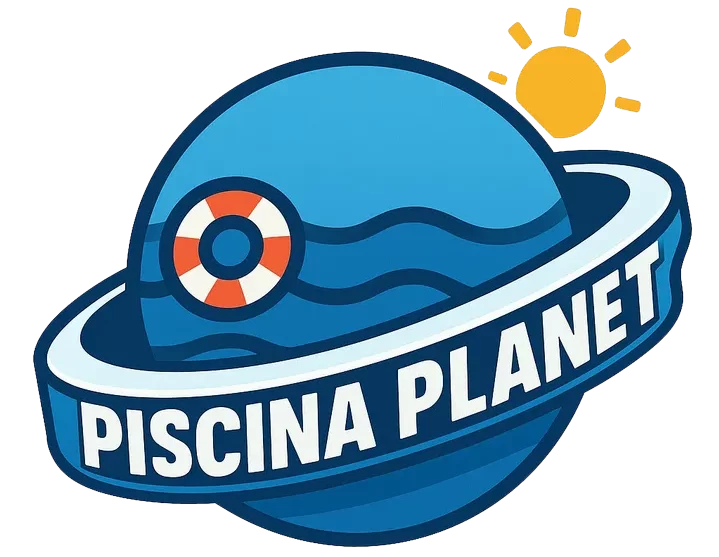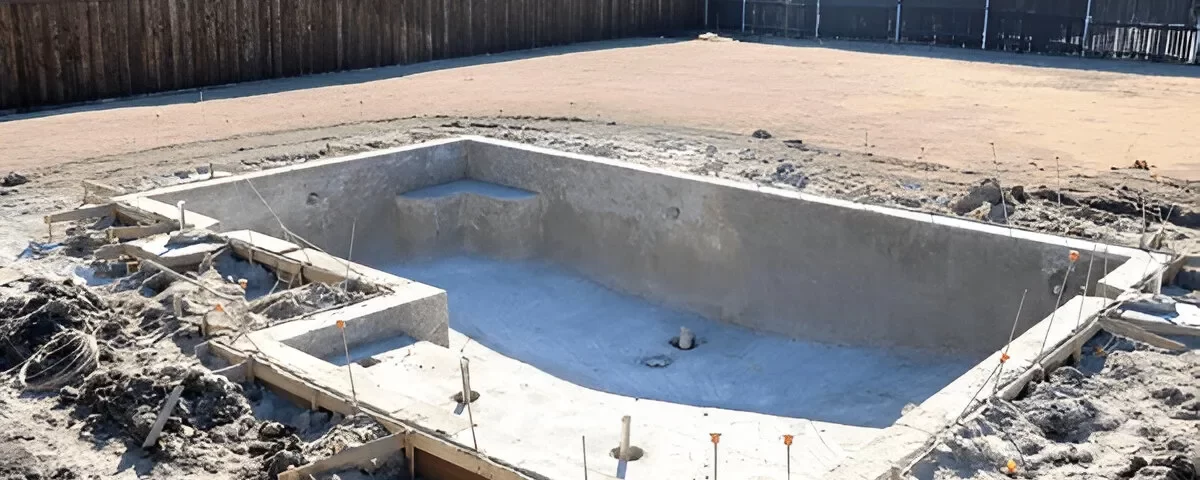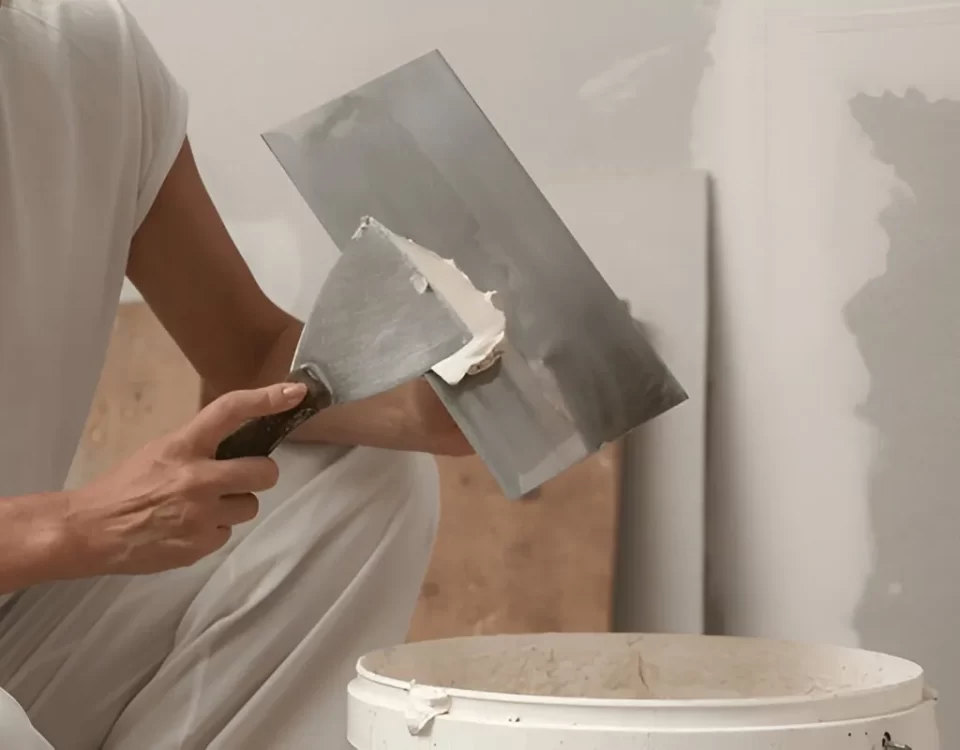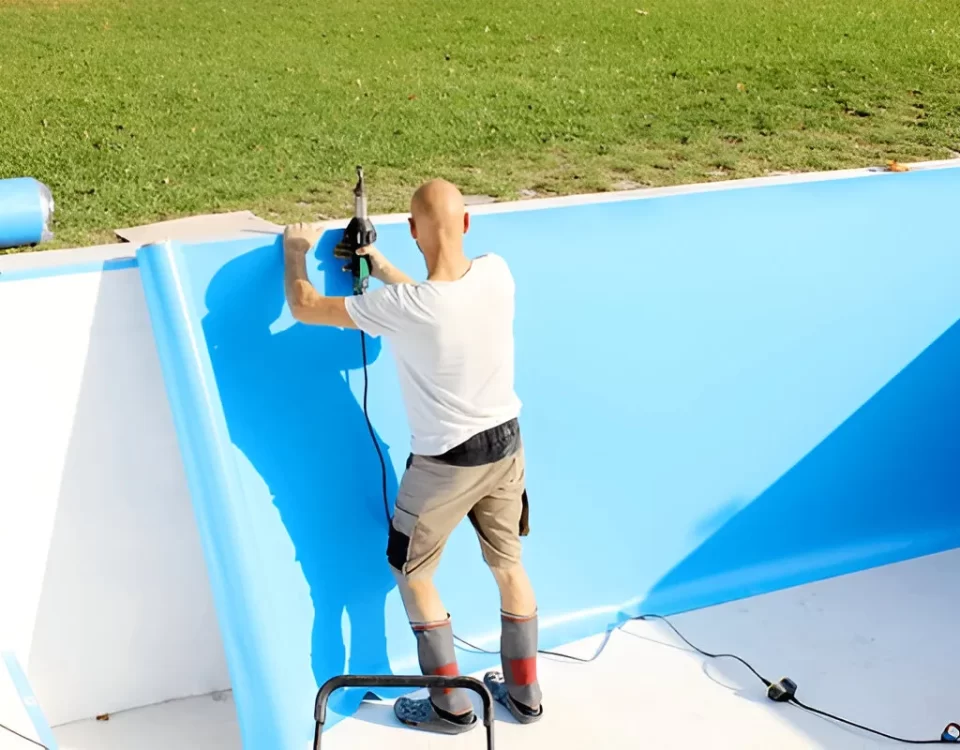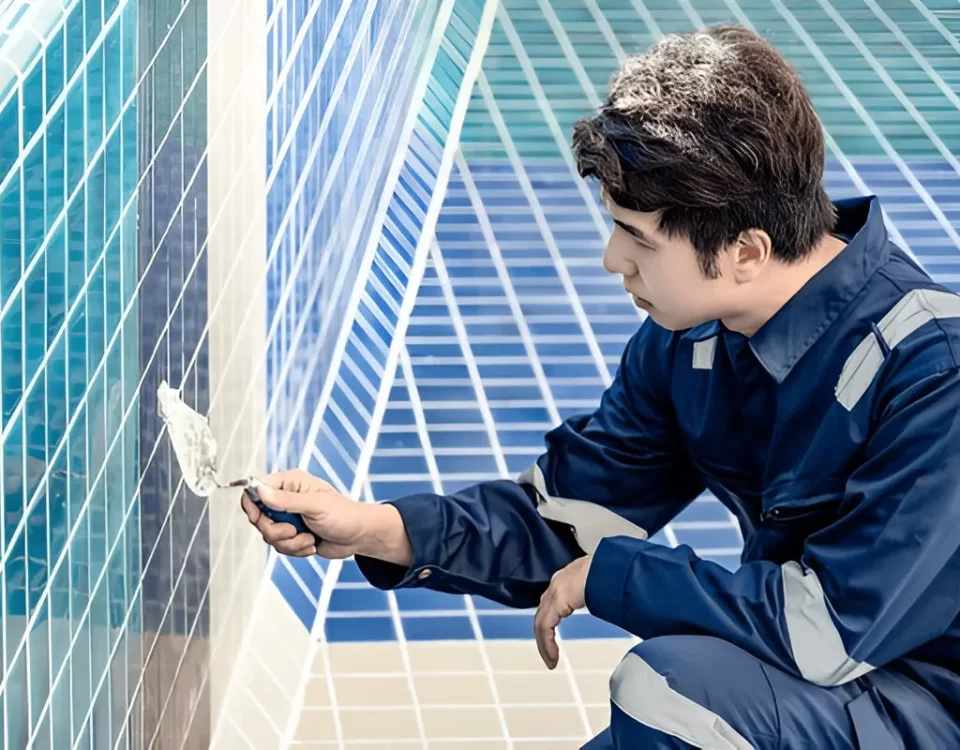Revolutionize Your Projects: Master Concrete Mixing Techniques Now!

Mighty Steel: Unveiling the Secrets of Reinforcement Bars
May 29, 2025The Basics of Concrete Mixing
Importance of Proper Concrete Mixing Techniques
The significance of utilizing proper concrete mixing techniques cannot be overstated, particularly in niches such as swimming pool construction where structural integrity is paramount. A well-mixed concrete ensures optimal strength, durability, and resistance to environmental factors. Inadequate mixing can lead to inconsistencies in the mix, resulting in weak spots that compromise the overall stability of the structure. Thus, mastering the art of concrete mixing is essential for achieving high-quality results.
Understanding the Components of Concrete Mix
To grasp the fundamentals of concrete mixing, it is vital to comprehend the core components that constitute a concrete mix. Typically, a standard concrete mix is composed of three primary ingredients: cement, aggregate, and water. Cement acts as the binding agent, while aggregates—broken stones, gravel, or sand—provide volume and stability. The correct water-to-cement ratio is crucial, as it determines the workability and overall strength of the mixed concrete. A balanced combination of these elements results in a homogeneous mixture that can withstand the rigors of climate and usage.
Overview of Different Types of Concrete Mixes
In the realm of concrete mixing, various types of mixes cater to different needs and applications. Below is a table summarizing the most common types:
| Type of Concrete Mix | Description |
|---|---|
| Standard Concrete Mix | Commonly used for structural applications, offers good strength. |
| High-Strength Concrete Mix | Engineered for high-load applications, ideal for pool structures. |
| Self-Compacting Concrete | Flows into place under its own weight, minimizing air pockets. |
| Shotcrete | A method of applying concrete through a hose under high pressure, often used for pool walls. |
| Polymer-modified Concrete | Enhances durability and adhesion, suitable for pool surfaces. |
Common Mistakes to Avoid in Concrete Mixing
Even seasoned professionals can fall prey to certain common mistakes during the concrete mixing process. One prevalent issue is the improper water-cement ratio, which can lead to concrete that is either too weak or excessively dry. Additionally, neglecting to thoroughly mix the components can result in uneven distribution of materials, affecting performance. Another critical error is the use of poor-quality aggregates, which can introduce impurities and weaken the final product. By avoiding these pitfalls, one can ensure a more reliable and robust concrete mix suitable for the demands of swimming pool construction.
Equipment for Concrete Mixing
Essential Tools and Equipment Needed for Concrete Mixing
Concrete mixing requires a blend of specialized tools and equipment to ensure that the mixing process is efficient and yields high-quality results. The essential tools include:
- Concrete Mixer: A central piece of equipment, available in various sizes and types, from portable mixers for small projects to larger stationary units for more extensive operations.
- Mixing Tools: Shovels, trowels, and hoes are crucial for manually mixing smaller batches and incorporating additives into the mix.
- Measuring Equipment: Accurate scales and measuring cups ensure that the right proportions of cement, water, and aggregates are used, which is vital for achieving the desired concrete strength.
- Safety Gear: Personal protective equipment like gloves, goggles, and masks protects the mixer from harmful dust and chemical exposure.
Choosing the Right Equipment for the Job
Selecting the right concrete mixing equipment is imperative for the success of any swimming pool construction project. Factors to consider include:
- Project Size: For small-scale projects, a portable mixer might suffice, while larger pools demand heavier-duty mixers capable of handling significant volumes.
- Type of Concrete: The specific type of concrete mix can dictate equipment choices; for example, high-performance mixes may require specialized mixers to ensure homogeneous blending.
- Budget: While investing in high-quality equipment is advisable, it is also essential to align choices with available budget constraints.
Maintenance Tips for Concrete Mixing Equipment
Proper maintenance of concrete mixing equipment is crucial for longevity and efficiency. Here are some indispensable maintenance tips:
- Regular Cleaning: Thoroughly wash the mixer after each use to avoid concrete residue buildup, which can lead to performance issues over time.
- Inspections: Schedule routine inspections to check for wear and tear, ensuring that vital components function optimally. Pay special attention to electrical systems and moving parts.
- Lubrication: Keep all moving parts well-lubricated to prevent unnecessary friction, which can lead to equipment failure.
- Storage Conditions: Store equipment in a cool, dry place away from direct sunlight or harsh weather conditions to extend its lifespan.
| Equipment | Application | Maintenance Frequency |
|---|---|---|
| Concrete Mixer | Mixing concrete | After every use |
| Measuring Tools | Gathering materials | Weekly inspection |
| Shovels and Trowels | Manual mixing and shaping | As needed |
Preparing for Concrete Mixing
Safety Measures to Consider Before Starting the Mixing Process
Before embarking on the journey of mixing concrete, it is imperative to prioritize safety. The handling of cement, aggregates, and other related materials demands careful attention to prevent accidents and health hazards. Always equip yourself with appropriate personal protective equipment (PPE), including gloves, goggles, and a dust mask, to shield against harmful inhalants and abrasives. Additionally, ensure that your workspace is well-ventilated to mitigate the risk of inhaling harmful dust particles.
Furthermore, be mindful of the structural integrity of the mixed concrete itself. When preparing for mixing, inspect the area for any potential hazards, such as uneven ground or nearby machinery. Establish a safe perimeter and communicate effectively with all team members. It is also wise to have a first aid kit readily available, as quick access to medical supplies can make a significant difference in emergencies.
Preparing the Workspace for Efficient Concrete Mixing
A well-organized workspace is paramount for achieving superior results in concrete mixing. Begin by selecting a suitable area that is spacious enough to accommodate all necessary equipment and personnel. Clean the mixing area thoroughly to remove any debris or contaminants that could compromise the quality of the mix.
Design a layout that allows for a smooth flow of materials. Position material bags, such as cement and aggregates, in close proximity to the mixing site, ensuring easy accessibility. To further enhance efficiency, consider using a platform or mixing container that allows for easy pouring and preventing spills. Additionally, it is critical to keep water nearby, as it is an essential component of the mixing process and must be readily available for adjustments.
Calculating the Correct Proportions of Materials for the Mix
Achieving the ideal concrete mix requires an understanding of proportions. The widely accepted formula for standard concrete consists of a 1:2:3 ratio, which translates to one part cement, two parts sand, and three parts gravel. However, this can vary based on specific requirements. To calculate the required quantities, utilize the following formula:
| Material | Ratio | Quantity (in cubic meters) |
|---|---|---|
| Cement | 1 | X |
| Sand | 2 | 2X |
| Gravel | 3 | 3X |
For instance, to prepare a concrete mix of 9 cubic meters, you would require 1 cubic meter of cement, 2 cubic meters of sand, and 3 cubic meters of gravel. Adjust the quantities based on specific project requirements, such as strength or durability considerations, as certain applications might require a different mix ratio.
Pro Tips for Effective Concrete Mixing
Mixing Techniques for Achieving the Desired Consistency
Achieving the perfect consistency when mixing concrete is paramount, especially for projects such as swimming pool installations where structural integrity and aesthetics come into play. One of the most effective techniques is the wet mix method, which involves adding more water to the mix to create a viscous texture. This approach promotes a smoother finish and easier workability. Conversely, the dry mix technique entails using less water, resulting in a denser and sturdier concrete, ideal for foundational layers.
Factors to Consider When Adjusting the Mix for Specific Projects
When tailoring your concrete mix, there are several crucial factors to consider for optimal results. The first is the type of aggregate. Aggregates significantly influence the strength and durability of your concrete; for instance, using crushed stone rather than gravel can enhance load-bearing capacity. Additionally, weather conditions play a vital role—hot temperatures can cause the mix to cure too quickly, while cold environments can slow down the curing process, both of which may necessitate adjustments in water content. Lastly, the intended use of the concrete, especially for swimming pools, demands specific care regarding the degree of waterproofing and finish required.
Expert Advice on Troubleshooting Common Mixing Problems
Even the most experienced concrete mixers encounter challenges. One of the most common issues is achieving an uneven consistency. If your mix has lumps or feels grainy, it may indicate insufficient water or inadequate mixing time. To resolve this, one expert tip is to use a mechanical mixer, which guarantees a thorough blend. Another prevalent problem is segregation, the separation of coarse aggregates from the finer materials. This can be prevented by maintaining a balanced mix design and avoiding excessive water, which disrupts the cohesion of the materials.
Key Ingredients and Their Ratios
| Ingredient | Common Ratio |
|---|---|
| Cement | 1 Part |
| Sand | 2 Parts |
| Gravel | 3 Parts |
| Water | 0.5 Parts |
Familiarizing yourself with these key ingredients and their ratios will assist in developing a concrete mix that meets specific project requirements. Keep in mind that while these ratios are standard, they may require slight adjustments depending on your particular conditions.
Mixing Tools and Equipment
Utilizing the right tools can greatly enhance the efficiency and effectiveness of your concrete mixing process. A drum mixer is ideal for large quantities, while a hand mixer is sufficient for smaller tasks. Both ensure that ingredients are combined thoroughly, reducing the chance of inconsistencies. Additionally, using measuring containers helps maintain precise ingredient ratios, thus achieving more reliable outcomes.
Best Practices for Mixing and Application
When mixing concrete, always begin with the aggregates before adding cement and water to ensure even distribution. It’s advisable to mix the dry ingredients first, creating a uniform blend. After the water is added, remember to mix until the concrete reaches a consistent, workable state, aiming for a texture that holds shape yet is pourable. Following these best practices not only improves the integrity of the concrete but directly impacts the quality of your swimming pool structure.
Advanced Concrete Mixing Techniques
Exploring Specialized Mixing Methods for Specific Applications
Advanced concrete mixing techniques are pivotal for achieving optimal results in various construction projects, particularly in the swimming pool niche. Among these methods, high-shear mixing stands out, offering enhanced homogenization of the concrete mix. This technique utilizes high-speed blades, effectively breaking down particles and integrating elements uniformly, which is crucial when creating complex pool shapes that demand superior structural integrity.
Another innovative approach is the use of twin-shaft mixers, which boast rapid mixing capabilities and consistent results. These mixers are particularly adept at producing self-compacting concrete, an essential quality for pool applications where density and durability are paramount. The unique design allows for optimal mixing of aggregate, cement, and water, ensuring that the consistency is maintained throughout the batch.
Incorporating Additives for Enhanced Properties in the Concrete Mix
Additives play a significant role in enhancing the properties of concrete, making them indispensable for specialized applications. For instance, incorporating superplasticizers can dramatically increase the workability of the concrete mix without adding more water. This is particularly beneficial in swimming pool construction, where precision and fluidity are needed to ensure a smooth finish and adherence to intricate designs.
Furthermore, the addition of fibers, such as polypropylene or glass fibers, can significantly improve the tensile strength and crack resistance of the concrete. These enhancements are essential, as swimming pools are subjected to temperature fluctuations and water pressure, making durability a critical factor. The use of these advanced additives allows builders to create a more resilient and long-lasting swimming pool environment.
Case Studies Showcasing Innovative Concrete Mixing Solutions
Numerous case studies illustrate the efficacy of advanced concrete mixing techniques in real-world applications. One notable example is the construction of an Olympic-sized swimming pool that utilized a hybrid mixing technique, incorporating both high-shear and twin-shaft methods. This approach yielded a highly durable pool structure that could withstand rigorous use and environmental conditions while also allowing for a smooth surface finish that met regulatory standards.
Another compelling case involved the use of ultra-high-performance concrete (UHPC) in pool walls. By utilizing specialized mixing strategies that incorporated nano-silica and high-strength polymer additives, builders achieved a remarkable compressive strength, over 10,000 psi. This innovative mix not only extended the lifespan of the pool but also enhanced its aesthetic appeal through an ultra-smooth finish.
| Concrete Mix Type | Key Additive | Benefit |
|---|---|---|
| Self-Compacting Concrete | Superplasticizer | Improved flow and workability |
| Ultra-High-Performance Concrete | Nano-Silica | Enhanced strength and durability |
| Fiber-Reinforced Concrete | Polypropylene Fibers | Superior crack resistance |
Testing and Quality Control in Concrete Mixing
Ensuring the integrity of concrete for swimming pool construction requires meticulous attention to detail during the mixing process. The importance of testing the quality of the concrete mix cannot be overstated. Quality concrete is fundamental to the longevity and durability of pool structures, as it withstands the harsh conditions associated with constant water exposure and environmental fluctuations. Inadequate testing can lead to severe issues, including cracking, leaching, and structural failure, underscoring the necessity of rigorous quality control measures.
The Significance of Testing
Effective testing of concrete mixes offers assurance that the material will perform as intended. Concrete testing not only evaluates strength but also assesses critical attributes such as workability, setting time, and resistance to water penetration. By employing standard testing protocols, stakeholders can confirm that the concrete adheres to industry standards, which mitigates the risk of future complications. Adequate testing ensures that the swimming pool remains aesthetically appealing and structurally sound throughout its lifespan.
Testing Methods for Strength and Durability
Several established testing methods exist to assess the strength and durability of concrete. Among the most widely recognized methods are:
| Testing Method | Description |
|---|---|
| Compression Test | Measures the compressive strength of cured concrete samples. |
| Flexural Strength Test | Evaluates the tensile strength by applying a load until failure. |
| Water Absorption Test | Assesses porosity and resistance to water ingress. |
| Slump Test | Determines workability and consistency of the freshly mixed concrete. |
By employing these diverse testing methods, builders can create concrete mixes that not only meet but exceed the required performance specifications for swimming pool applications.
Implementing Quality Control Measures
Implementing proactive quality control measures throughout the mixing process is essential for achieving optimal outcomes. During the preparation phase, it is crucial to ensure that all materials, including aggregates, water, and admixtures, comply with specified standards. Monitoring the mixing duration and consistency of the mixture is equally significant. Continuous oversight during these stages ensures uniformity, thereby optimizing the concrete’s performance attributes.
Furthermore, keeping detailed records of all mix designs, test results, and quality assessments fosters accountability and provides a reference for future projects. Regularly revisiting and refining these practices based on past performance and emerging technologies can facilitate ongoing improvement in the quality of concrete used in swimming pool construction. It is this commitment to excellence that ultimately leads to durable, resilient, and aesthetically pleasing swimming pool environments.
Sustainability in Concrete Mixing
Eco-friendly Practices and Materials for Sustainable Concrete Mixing
The construction industry is acknowledging the imperative need for sustainability, particularly in concrete mixing. Eco-friendly practices are becoming the cornerstone of modern concrete production. One such practice involves using recycled materials, such as crushed concrete, fly ash, and slag, which not only reduces dependency on virgin resources but also enhances the properties of the concrete. These materials act as partial replacements for Portland cement, which is responsible for significant carbon emissions during production. By integrating these materials, we not only maintain structural integrity but also promote environmental stewardship.
Reducing Waste and Carbon Footprint in Concrete Production
Concrete production is notorious for its substantial waste and significant carbon footprint. To mitigate these challenges, industry experts are adopting sophisticated techniques such as optimizing mixture proportions and employing just-in-time production strategies. By customizing mixtures to meet specific project demands, excess material is minimized, which directly translates into less waste generation. Furthermore, the incorporation of carbon capture technology during the cement manufacturing process contributes to a decreased carbon footprint, demonstrating a proactive approach towards a cleaner environment.
Innovations in Green Concrete Technology for Environmentally Conscious Projects
Innovation in green concrete technology is ushering in a new era of environmentally conscious construction. One remarkable development is the use of geopolymer concrete, which offers a sustainable alternative to conventional cement. This type of concrete utilizes industrial by-products as its primary binder, significantly reducing greenhouse gas emissions. Additionally, self-healing concrete, which employs bacteria or other agents to autonomously repair cracks, not only extends the lifespan of structures but also minimizes maintenance-related resource expenditure over time.
Table: Comparison of Traditional and Green Concrete Practices
| Concrete Type | Carbon Emissions (kg CO2 per m³) | Recycled Material Usage (%) | Durability (Years) |
|---|---|---|---|
| Traditional Concrete | 400-800 | 0 | 30-50 |
| Green Concrete | 100-300 | 20-40 | 50+ |
Emerging Trends in Sustainable Concrete Mixing Techniques
The advent of digital technologies has catalyzed a transformation in how we approach sustainable concrete mixing. The utilization of Building Information Modeling (BIM) allows for meticulous planning and resource allocation, ensuring that projects are executed with minimized waste and optimal efficiency. Moreover, advancements in automation and robotics facilitate precise mixing processes, thereby ensuring consistency in quality and sustainability adherence. These trends not only enhance operational efficiency but also align with global sustainability goals.
Collaboration and Education for a Sustainable Future
To further drive the agenda of sustainability in concrete mixing, collaboration among stakeholders—including engineers, builders, and suppliers—is essential. By fostering partnerships, sharing best practices, and encouraging ongoing education regarding sustainable material usage, the concrete industry can collectively pave the way for more responsible construction methodologies. Furthermore, environmentally conscious projects can serve as exemplars, illustrating the financial and ecological benefits derived from sustainable practices, thereby inspiring a broader shift across the sector.
Stay Updated: Discover more about Construction & Materials swimming pool on Google News

Javier Morales is passionate about pool design, maintenance, and outdoor living. With years of hands-on experience, he offers practical tips, creative ideas, and expert insights to help readers make the most of their pool spaces. At Piscina Planet, Javier shares everything from seasonal care guides to the latest trends in pool innovation.
